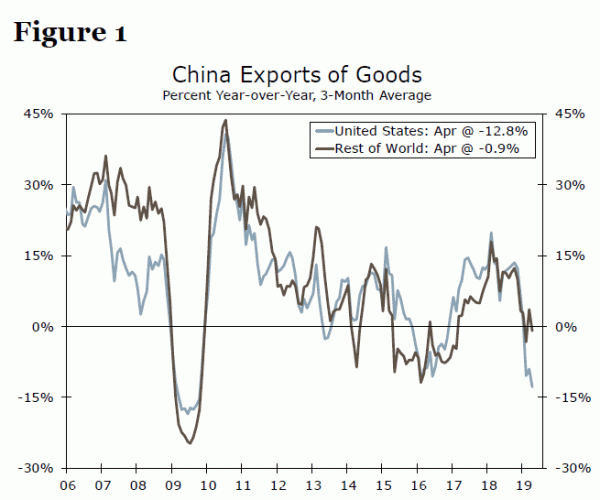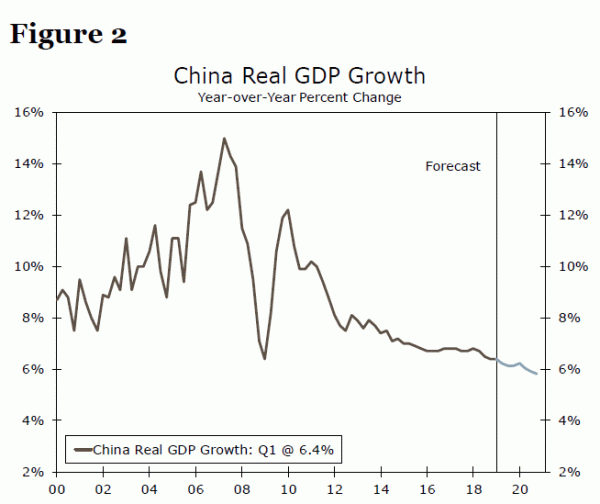Executive Summary
The United States moved ahead with an increase in tariffs on Chinese goods today. Risks are, unsurprisingly, to the downside for our current Chinese GDP forecast, although much will depend on how this fluid trade situation evolves as well as how Chinese policymakers respond. We also see key implications for other trade issues, including USMCA and auto tariffs.
Implications of Latest U.S. Tariffs for China, and More
Effective today, the United States raised the 10% tariff on $200B of imports from China to 25%. The currency market reaction thus far has been consistent with “buy the rumor, sell the fact,” as the dollar is broadly lower and riskier currencies are generally outperforming, more or less a mirror image of the reaction on Monday to the original tariff threats. In addition to the “sell the fact” dynamics, there may be some other reasons the market reaction has been subdued. For one, markets may be under the impression the tariff increase will not be in place for long. Trade talks between U.S. and Chinese negotiators still took place today, as there has not been a full-fledged breakdown in trade relations between the two nations. However, retaliatory measures from China are likely forthcoming, and we would be surprised if renewed tensions lead to the two sides suddenly reaching a final trade deal.
On the policy front, we expect Chinese authorities to continue providing monetary and fiscal policy support for the economy as long as trade tensions persist and the tariffs remain in place. There had previously been some reports that policymakers were considering dialing back the degree of policy support, but today’s tariff increase suggests authorities will maintain a steady drip of support for the Chinese economy. For that reason, we see only modest downside risks of around 0.2 percentage points to our current Chinese GDP forecast of 6.2% for 2019, although the risks are tilted toward a larger impact.
Lastly, we note two separate trade issues that could be affected by today’s tariff announcement. First is the USMCA, the replacement agreement for NAFTA. U.S. Congress seems to have made little to no progress in getting closer to an agreement on whether to ratify the USMCA, as one major hang-up seems to be the steel and aluminum tariffs imposed on Mexico and Canada last year. Influential U.S. policymakers have signaled the USMCA will not be considered until those tariffs are removed, and President Trump may be hesitant to do so given his recent decision to raise tariffs on China. Separately, Trump has until May 18 to decide whether to impose tariffs on U.S. auto imports. With his focus now on China, Trump may decide to delay this decision deadline beyond May 18, but there is still a small risk he moves ahead with auto tariffs next week.















